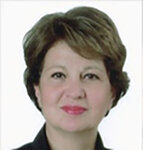Effect of Concept Attainment and Inquiry Training Model in Teaching Biological Science at Secondary Level
DOI:
https://doi.org/10.52634/mier/2016/v6/i1/1460Keywords:
Effect, Concept Attainment Model, Inquiry Training Model.Abstract
The purpose of the study was to find out the effect of Concept Attainment and Inquiry Training Model in teaching Biological Science at secondary level. Descriptive surveyexperimental research design (quasi-experimental) was employed. For the realization of the objectives of the study, a random sample of 175 teachers teaching Biological Science was selected from 24 mandals of Srikakulam district for the purpose of a survey. A sample of 360 students was selected at random. 180 students each (90 each from class VIII and IX) from two schools were selected randomly for experimentation and as controlled group. The experimental group was given the Concept Attainment and Inquiry Training models of teaching. The control group was taught through the conventional method of teaching. The major data collecting tools were questionnaire and achievement test (experimental study). The collected data were analysed by using both descriptive and inferential statistics. In addition, qualitative analysis (by variation) was used. The main aim of this study is to bring out the relative effect of CAM, ITM and conventional method of teaching on the achievement of students for acquisition of Biology concepts in class VIII and IX. The study reveals that there is a significant difference not only between CAM and conventional method, but also between ITM and conventional method on the achievement of students in understanding of Biological Science concepts.
Downloads
Metrics
Downloads
Published
How to Cite
Issue
Section
License
Copyright (c) 2021 Gara Latchanna, K. Swarnalatha

This work is licensed under a Creative Commons Attribution 4.0 International License.
The articles published in the MIER Journal of Educational Studies, Trends and Practics (MJESTP) are distributed under the terms of the Creative Commons Attribution License (CC BY 4.0), which permits unrestricted use, distribution, and reproduction in any medium, provided the original author and source are credited.
- Copyright on any open access article in the MIER Journal of Educational Studies, Trends and Practics (MJESTP) published by Model Institute of Education and Research (MIER) is retained by the author(s).
- Author(s) grant MIER a license to publish the article and identify himself/herself/themselves as the original publisher.
- Authors also grant any third party the right to use the article freely as long as its integrity is maintained and its original authors, citation details and publisher are identified.
- The Creative Commons Attribution License 4.0 formalizes these and other terms and conditions of publishing articles.
References
Badri Y., & Mishra, K. (2013). A study of the impact of laboratory approach on achievement and process skills in science among 1st standard students. International Journal of Scientific and Research Publications, 3(1).
Joyce, B., & Weil, M. (2003). Models of teaching 5th edition. New Delhi: Prentice Hall of India.
Joyce, B., Weil, M., & Calhoun, E. (2013). Models of teaching (8th Edition). New Delhi:PHI Learning Private limited.
Donna, E., Bissonnette, C., Furino, S., Hall, S., Kenyon, T., Carville,R.M., Stubley, G., & Woudsma, C. (2011). The task force on innovative teaching practices to promote deep learning at the University of Waterloo: Final Report.
Funk, H. J. (2006). Learning science process skills. Iowa: Kendall/Hunt.
Garret, H.E. (2008). Statistics in psychology and education. New Delhi; Surjeet Publication.
Loretta, N. N., & Victoria, V. O. (2013). Effect of guided inquiry with analogy instructional strategy on students acquisition of science process skills. Journal of Education and Practice, 4(27).
Mujibul, H.S. (2013). Biological science inquiry model: A process of study. Paripex-Indian Journal of Research, 2(4), 75-77.
National Research Council. (2000). Inquiry and the national science education standard a guide for teaching and learning. Washington, DC: National Academy Press.
Najma N. S., & Nasim, S.M. (2002). Teaching of science today and tomorrow. New Delhi: Doaba House.
Nabob, C.R. (2006) Effects of two teaching methods on the achievement in and attitude to biology of students of different levels of scientific literacy. International Journal of Education Research, 45, 216 –229.
Nwosu, A.A. (2001). Gender and acquisition of science process skills among secondary schools students implications for science. Teaching Journal of Science Teachers Association of Nigeria, 42(41), 206-209.
Nwosu, A.A. (2004). Teachers awareness of creativity related behaviours in the science classroom implication for national development. Journal of Science Teachers Association of Nigeria, 39(1&2), 22-30.
Nzewi, U. (2000). Strategies for teaching erosion on formal settings. Environmental Education Project Series No. 4 of Science Teachers Association of Nigeria: 58-64.
Kumar, P., & Arora, S.K. (2013). Impact of inquiry based teaching model on students' achievement. International Journal of Arts Commerce and Literature, 1, 328-333.
Rex, H. (2009). A model of learning objectives- a taxonomy for learning, teaching, and assessing: A revision of bloom's taxonomy of educational objectives. Iowa State University: Center for Excellence in Learning and Teaching.
Sharma, R.C., & Shukla, C.S. (2002). Modern science teaching. New Delhi: Dhanpat Rai Publishing Company (P) Ltd.
Yogeshkumar, P. P. (2013) An introduction to modern models of teaching. International Journal for Research in Education, 2(2).





















